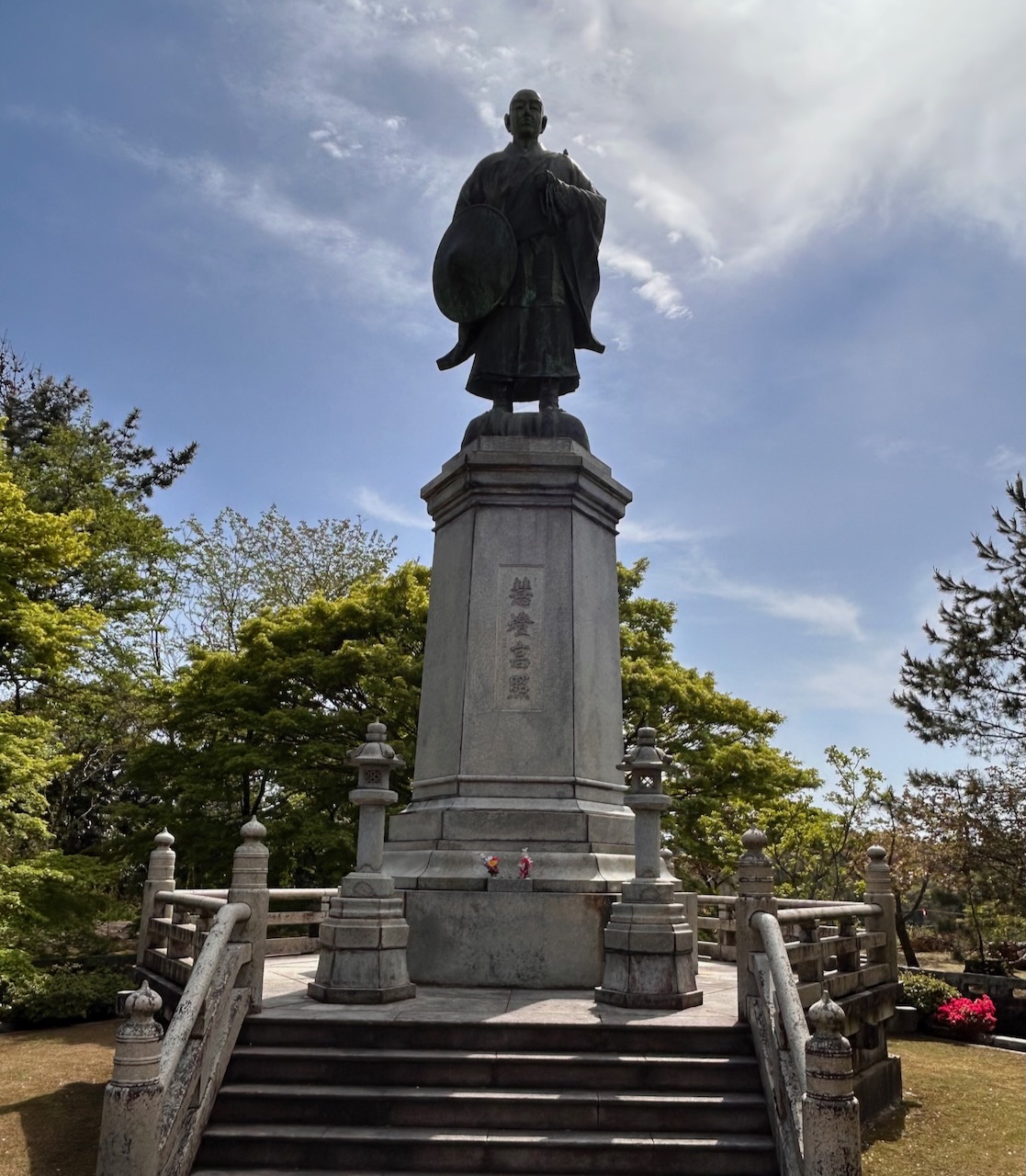
By Rev. Ken Yamada
In our Jodo Shinshu Buddhist tradition, Rennyo Shonin standardized the practice of saying “Namu Amida Butsu,” but it wasn’t his first choice.
As the eighth Honganji abbot, Rennyo (1415-1499) lived in a turbulent time of war, social upheaval, famine and religious persecution. Yet, he vastly grew the Honganji denomination and attracted legions of followers by making accessible and relevant Shinran’s teachings. During the time he spent in Yoshizaki on the Japan Sea coast, he established uniform rituals, ceremonies and activities that provided the bedrock for growing the sangha and enabled Honganji to become an independent denomination.
“Rennyo’s stay at Yoshizaki lasted only four years, yet activities during that period won him everlasting fame in the history of Jōdo Shinshū. It is thus accepted today that a new tradition of Honganji was born at this time,” wrote Shin’ya Yasutomi in the book, “Rennyo and the Roots of Modern Japanese Buddhism,” which he edited with Mark L. Blum (Oxford University Press, 2006).
Born 150 years after Shinran’s death, Rennyo grew up impoverished at the Honganji temple in Kyoto, which had fallen on hard times and was mostly deserted and ignored by visitors. The temple had become a branch of the Tendai Buddhist denomination of Mt. Hiei, where Shinran had lived as a monk.
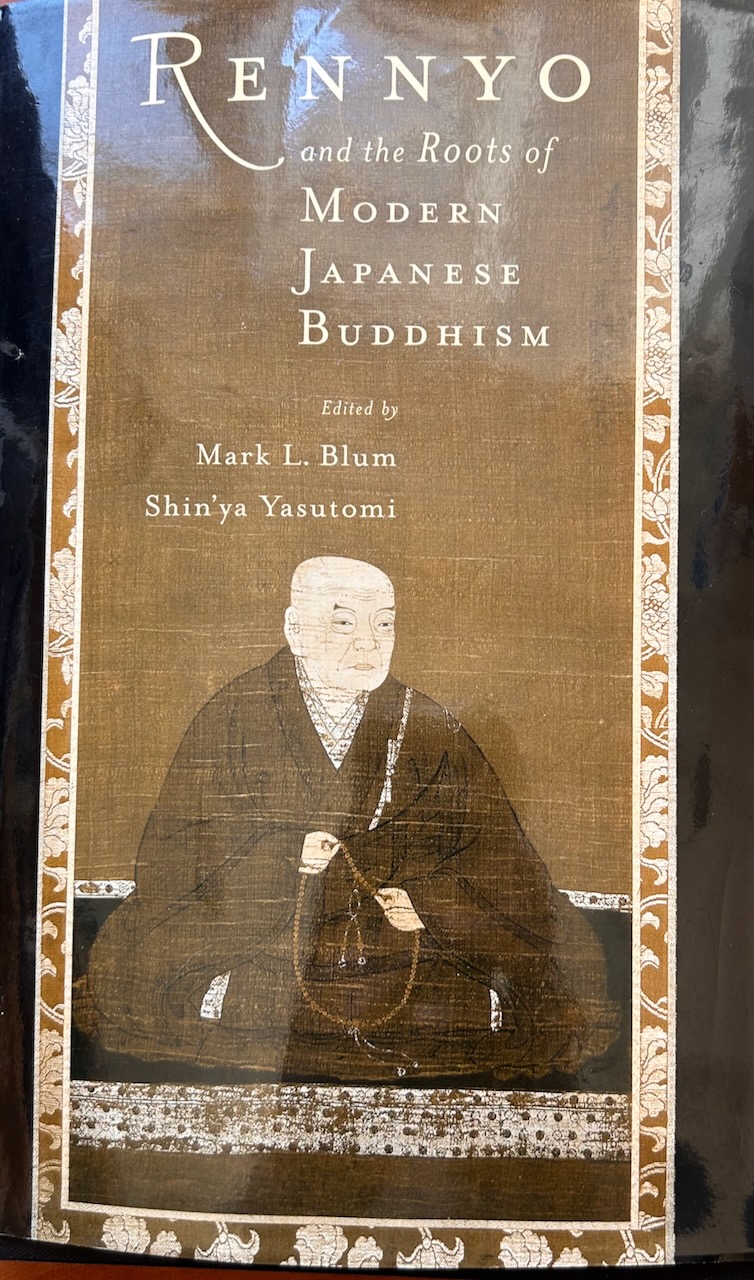
At age 43, Rennyo became abbot and quickly removed the upper seating area of the temple’s altar so that all seats were on a common level. He wanted no distinction between lay and clergy.
A record by disciple Kūzenki later quotes Rennyo saying:
I cast away myself, take a seat at the common level, and sit equally together. That is because [Shinran] Shonin said, “Within the four oceans, persons of shinjin are all brothers and sisters.” I too want to live in accordance with these words. By sitting together, I hope we might clarify what is not clear and more easily attain faith.
With personal charisma and an ability to meaningfully convey the teachings, Rennyo swiftly attracted followers of all stripes. He focused on reciting a 10-character phrase used by Shinran, “Ki-myo-jin-jip-pō-mu-ge-kō-nyo-rai” (Homage to the Tathagata of Unimpeded Light Pervading the Ten Quarters).
With Honganji’s increasing popularity grew the wrath of Tendai Buddhist authorities, who felt Rennyo established a new and unauthorized sect of Buddhism, which they labeled “mu-ge-kō.” They accused him of spreading these teachings to “ignorant men and women, and the lowly young and old,” encouraging them to gather together, ignore local deities, and burn buddha statues and sutra scrolls.
In 1465, Mt. Hiei priests attacked Honganji with 150 armed men, setting fire to the main hall. Rennyo escaped to an outlying area. They again attacked but he escaped. He changed to reciting a six-character phrase, “Na-mu-a-mi-da-butsu,” which Shinran also viewed as important and which was more widely practiced in Pure Land Buddhism.
For six years, Rennyo kept on the move until 1471, when he settled in Yoshizaki (present-day Fukui Prefecture), where Shinshu already spread among the local populace and local authorities were friendly.
On a promontory jutting out into Lake Kitagata, he built on a hill a temple called Yoshizaki Gobō. A township grew around the temple, teeming with priests, merchants, and residents. A large part of Rennyo’s appeal was his outgoing, friendly nature, leadership, and deep religious faith. The temple quickly became a popular gathering spot.
Everyone knows that followers of our sect—priests and laypeople, men and women—flock to the mountain in pilgrimage, particularly from the seven provinces of Kaga, Etchū, Noto, Echigo, Shinano, Dewa, and Ōshu. This is extraordinary for the last age and appears to signal something.
(Rennyo’s Letters, 1.7)
According to Yasutomi: “Records suggest that as a popular leader, Rennyo made great efforts to capture people’s hearts and paid careful attention to their needs. From his clothing and food to his manner of speaking, he consciously tried to become friendly with people and accept them as equals, and this approach seems to have further strengthened his religious charisma.”
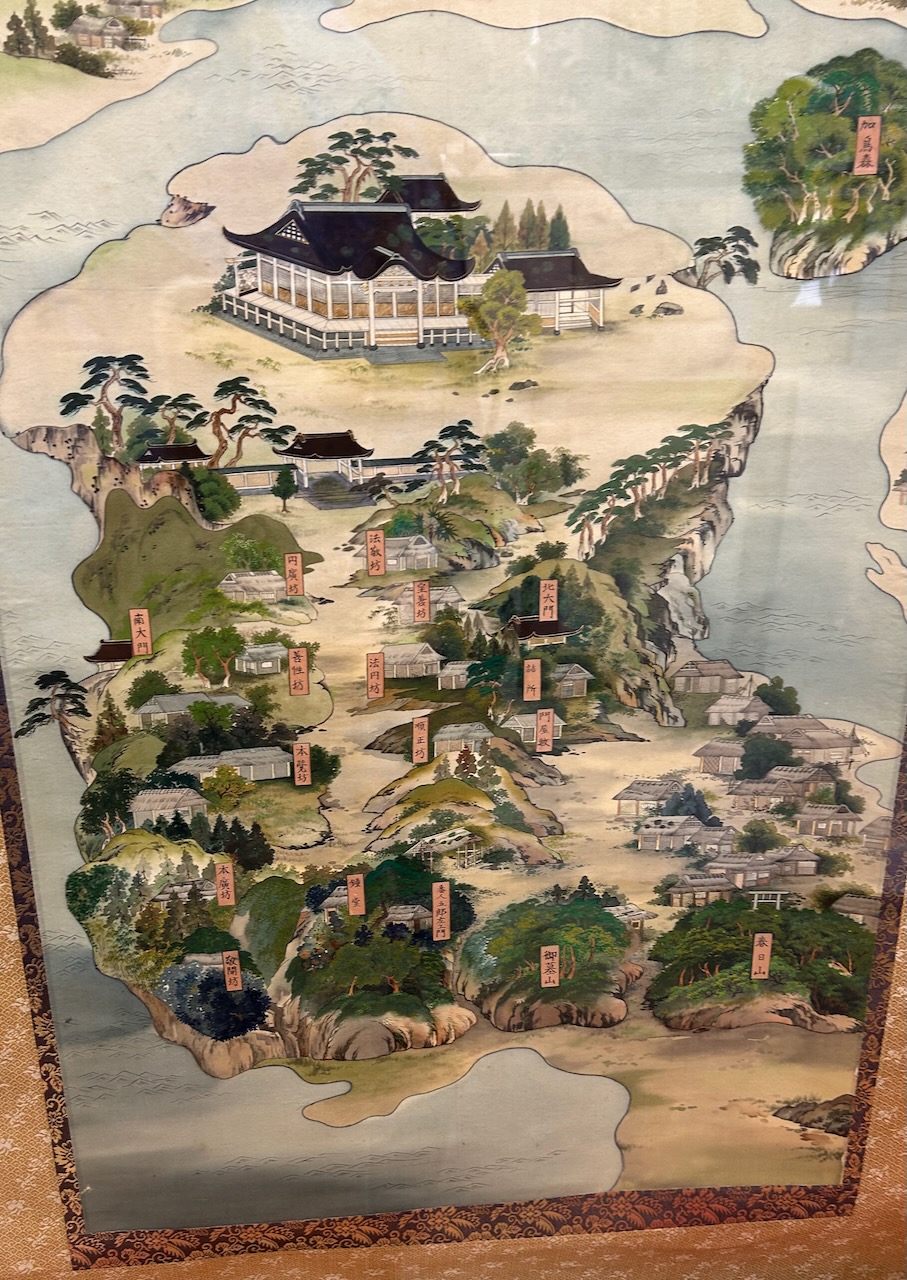
However, Rennyo faced major obstacles from local folk beliefs and customs tied to local deities, mistaken or misguided teachings, and ingrained superstitions. Some of those traditions, such as beliefs based on Tantra mysticism and Shinto gods, sprung from a neighboring province’s temples and shrines on Mt. Hakusan, considered a sacred place.
Some people in the region followed a secret form of Shin Buddhism, meeting privately, performing strange rituals and pledging devotion to a leader. Rennyo criticized those practices, such as “taking refuge in a teacher,” “entrusting through donations,” various anti-social activities, and “thieflike faith” (Japanese: monotori shinjin), in which leaders of Shinshu communities treated followers as their own property.
Consequently, Shinshu altars and places of worship lacked uniformity and typically consisted of makeshift arrangements, which may include portraits, scrolls, and statues of various buddhas and local deities. In an effort to standardize practice and to better focus people’s attention, Rennyo produced prodigious numbers of scrolls on which he wrote, “Namu Amida Butsu”and widely distributing them for use as altar centerpieces by followers. He reputedly wrote as many as 300 scrolls before Shinran’s annual memorial service.
Rennyo wrote:
[As the object of worship], a portrait is preferable to a wooden statue, and a scroll is preferable to a portrait.
However, Rennyo emphasized how these myōgō scrolls were not talisman, rather reminders that shinjin (faith) was essential. He once said, “Even if you wrap yourself in seven or eight layers of these, you won’t become a buddha if you don’t have faith.”
He established Shinran’s memorial as an important annual service and encouraged everyone to attend. This tradition, called Hōonkō, is held November 28th at Higashi Honganji in Kyoto, and continues today, attracting thousands of attendees.
For use in daily rituals, Rennyo chose Shōshinge and Wasan hymns from Shinran’s master text Kyōgyōshinshō. Shōshinge summarizes Shinshū teachings and expresses appreciation to historical teachers. Previously as a branch temple of Tendai Buddhism, Honganji rituals consisted of reciting six times a day the Ōjōraisan, a poem based on the Larger Sutra on the Buddha of Infinite Life and written by Chinese Buddhist master Shan-tao, a practice established by Shinran’s teacher Hōnen. In Yoshizaki, Rennyo made a woodblock print of Shōshinge, considered the first widely published writing of Shin Buddhism.
Yasutomi wrote:
Changing this service to the recitation of Shinran’s Shōshinge and Wasan, [Rennyo] shifted the focus to the words of Shinran, emphasizing the sectarian independence of Honganji from all other Jōdo or Pure Land schools based in the Hōnen lineage. By having this printed while in Yoshizaki, he at once established a standard liturgy unique to the Honganji organization.
Rennyo perhaps is best known for his letters, in which he explains fundamental concepts of Shin Buddhism, corrects misunderstandings, and admonishes followers to obey laws and adhere to proper behavior. Today, his letter “White Ashes” is traditionally read at funerals in our temples.
During his stay in Yoshizaki, Rennyo wrote 78 letters, about half of his existing 158 letters. These letters were typically read and discussed at gatherings and became a strong scriptural foundation for Rennyo’s propagational efforts. They are largely credited with helping spread Jodo Shinshu teachings throughout Japan.
A large part of Rennyo’s appeal was his focus on women. Not only did women face discrimination in male dominated society, they also faced a kind of spiritual discrimination. Viewed as weak and vulnerable, ancient Buddhist teachings spoke of the near impossibility of their religious salvation.
By contrast, Rennyo taught that women were especially beneficiaries of the Buddha’s compassion. By listening to the dharma, all women may awaken to Truth. Rennyo wrote many letters addressing the concerns of women, to which he was especially attuned, given his separation from his mother as a child, the deaths of his wives and daughters, and other personal experiences. Consequently, women flocked to the sangha.
Rennyo found innovative and creative ways to spread the teachings, such as bringing in Nō play performers, storytellers, singers and other entertainers. A story with a Buddhist message called “The Devil Mask of Daughter-in-Law Intimidation” became popular in the area and was performed as a play. Today in Yoshizaki, a devil mask is displayed at the Higashi Honganji temple called Gankyōji, as well as in the neighboring Nishi Honganji temple, Yoshizakiji.
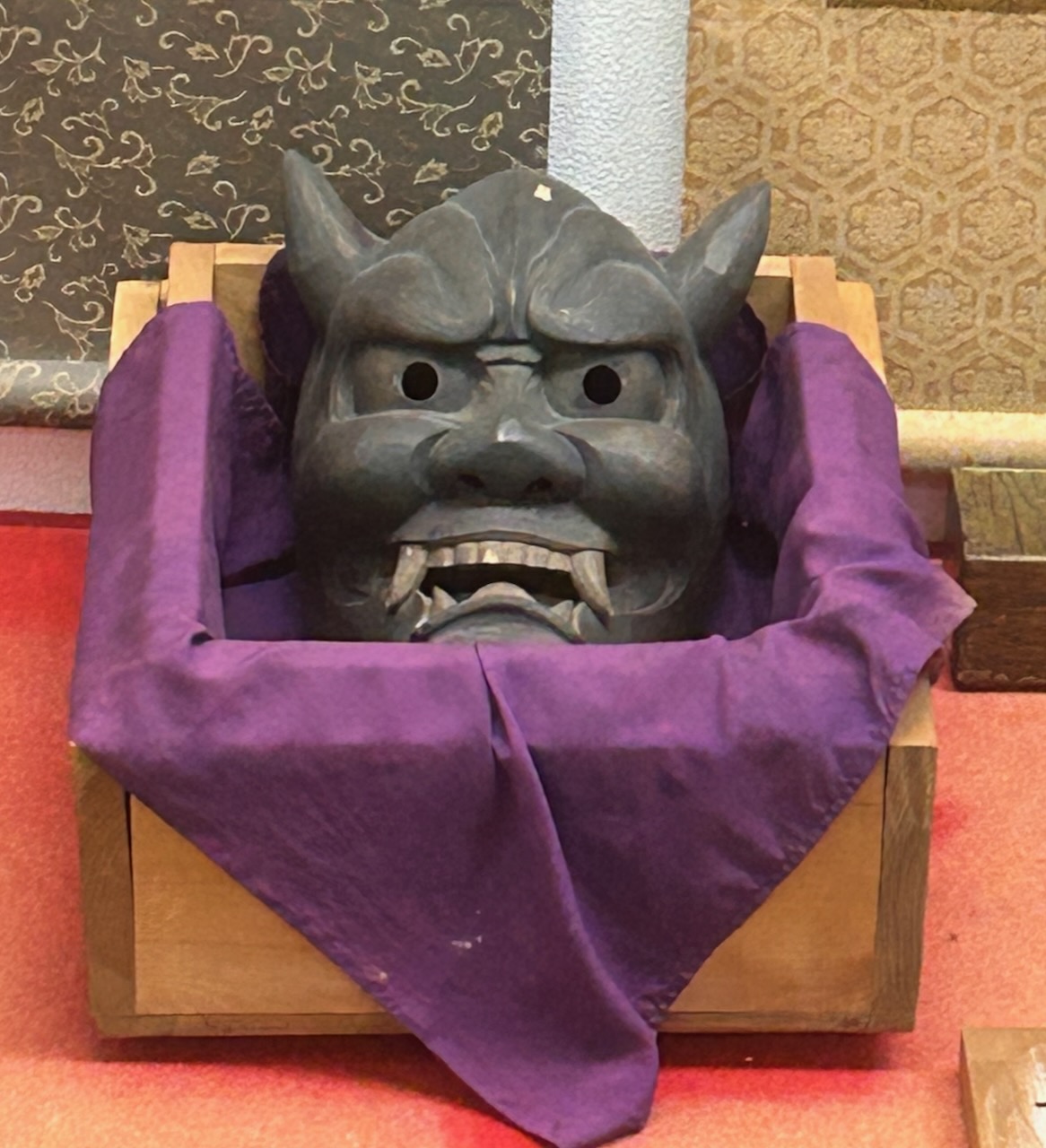
Another tradition begun in Yoshizaki was the formation of local congregational meetings (Japanese: kō, yoriai), which were gatherings by laypeople for hearing the teachings and participating in services and religious rituals that were otherwise unavailable in areas with no temple. These groups became sangha communities that offered spiritual support, group pilgrimages to spiritual sites, recreational activities, and for some, a financial cooperative in which members pooled their savings and took out loans (Japanese: tanomoshikō).
However, the turbulent times soon encroached on Yoshizaki. In a neighboring province, uprisings and riots by peasants (Japanese: ikkō ikki), many of whom were Shinshu followers, grew like wildfires as armed militia fought the warlord government. Within a ruling clan, internal disputes erupted as siblings vied for power. Religious groups felt slighted by Rennyo’s teachings and viewed Yoshizaki Gobō as a threat. Even followers of another Shin group (Takada lineage) fought armed conflicts with Rennyo-aligned groups.
According to the book, Rennyo, The Second Founder of Shin Buddhism, Minor L. Rogers and Ann T. Rogers (Asian Humanities Press, 1991):
Rennyo was aware of the inherent dangers of allying with either of the competing forces and that he actively sought to preserve Yoshizaki’s political neutrality. To this end, he built up fortifications and worked to unify the resident priests in a decision not to submit passively to occupation or to attack, but, if necessary, to meet force with force. At the same time, he was careful to disassociate himself from any movement to seize territory in the name of the Honganji and was consistently critical of Shinshū adherents with territorial ambitions. His most pressing concern was to protect his religious community, which he saw as the legitimate guardian of Buddha-dharma in the last age…
On the one hand, he sought to be faithful to Shinran’s teaching, for the most part apolitical, and on the other, to be responsive to the legitimate aspirations of his followers for spiritual nurture and some degree of security amidst political and social instability.
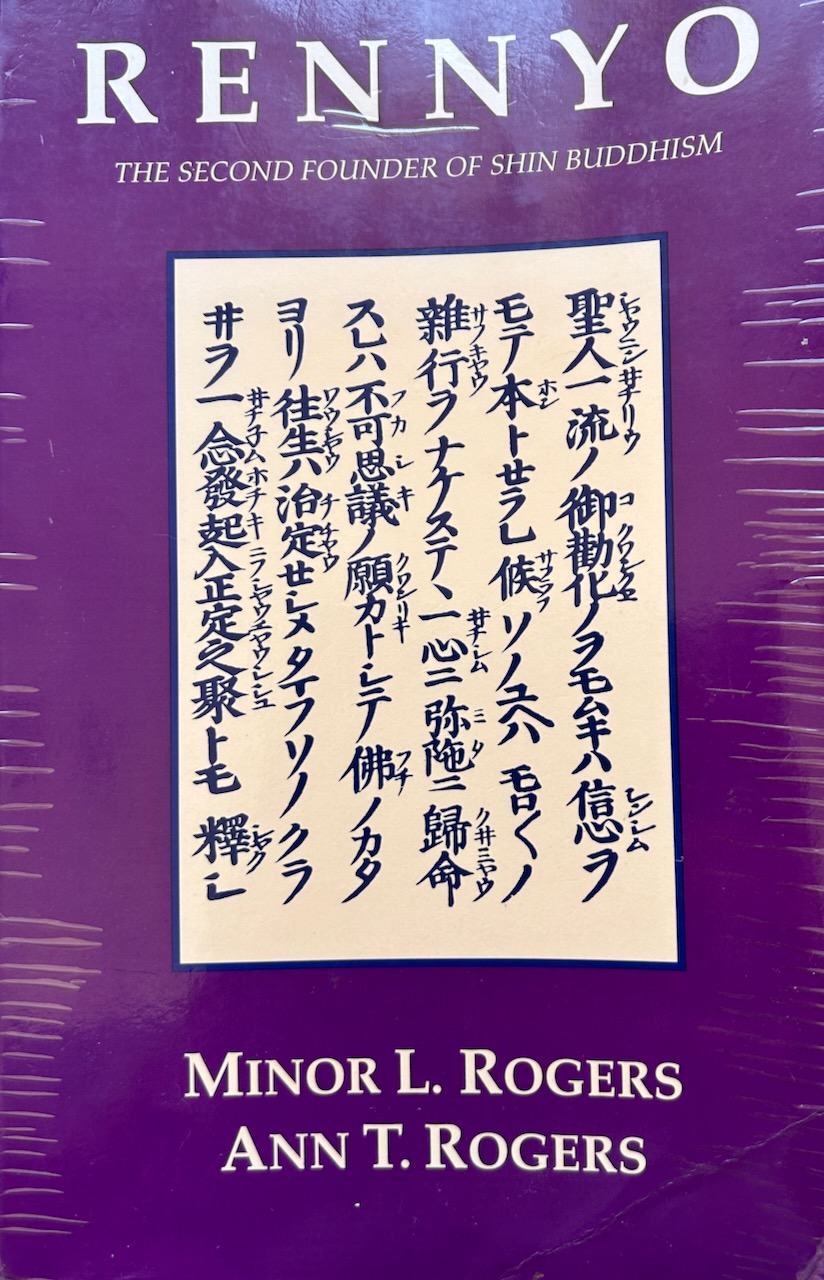
Facing threats, Yoshizaki followers armed themselves and fortified the temple grounds, turning it into a well-defended fortress. Alarmed, Rennyo wrote in a letter:
Do not slight the provincial military governors and local land stewards, claiming that you have attained faith; without fail meet your public obligations in full… Besides this, in particular, take the laws of the state as your outer aspect, store Other-Power faith deep in your hearts, and take [the principles of] humanity and justice as essential.
(Rennyo letter 2.6)
In 1474, arson destroyed Yoshizaki’s main hall. As the situation became increasingly volatile, Rennyo decided to leave. He eventually returned to Kyoto, where he established Yamashina Honganji.
In an era of violence and social turmoil, Rennyo tirelessly and faithfully propagated Shinran’s teachings, growing the Honganji temple organization into a major religious institution. A century after Rennyo’s time, Honganji split into Higashi Honganji and Nishi Honganji due to war and politics. Today the roots of our temples in the United States sprung from that original institution and Rennyo’s efforts.
According to Rogers, “Unlike Shinran, [Rennyo] took for granted that some form of clearly defined, structured religious institution was essential for the life of faith. For this reason, he addressed himself to questions never seriously considered by Shinran, whose teaching may be seen fundamentally as a response to the working of the Other Power of Amida’s Vow in his own life.”
-Rev. Yamada is editor at Higashi Honganj’s Shinshu Center of America

